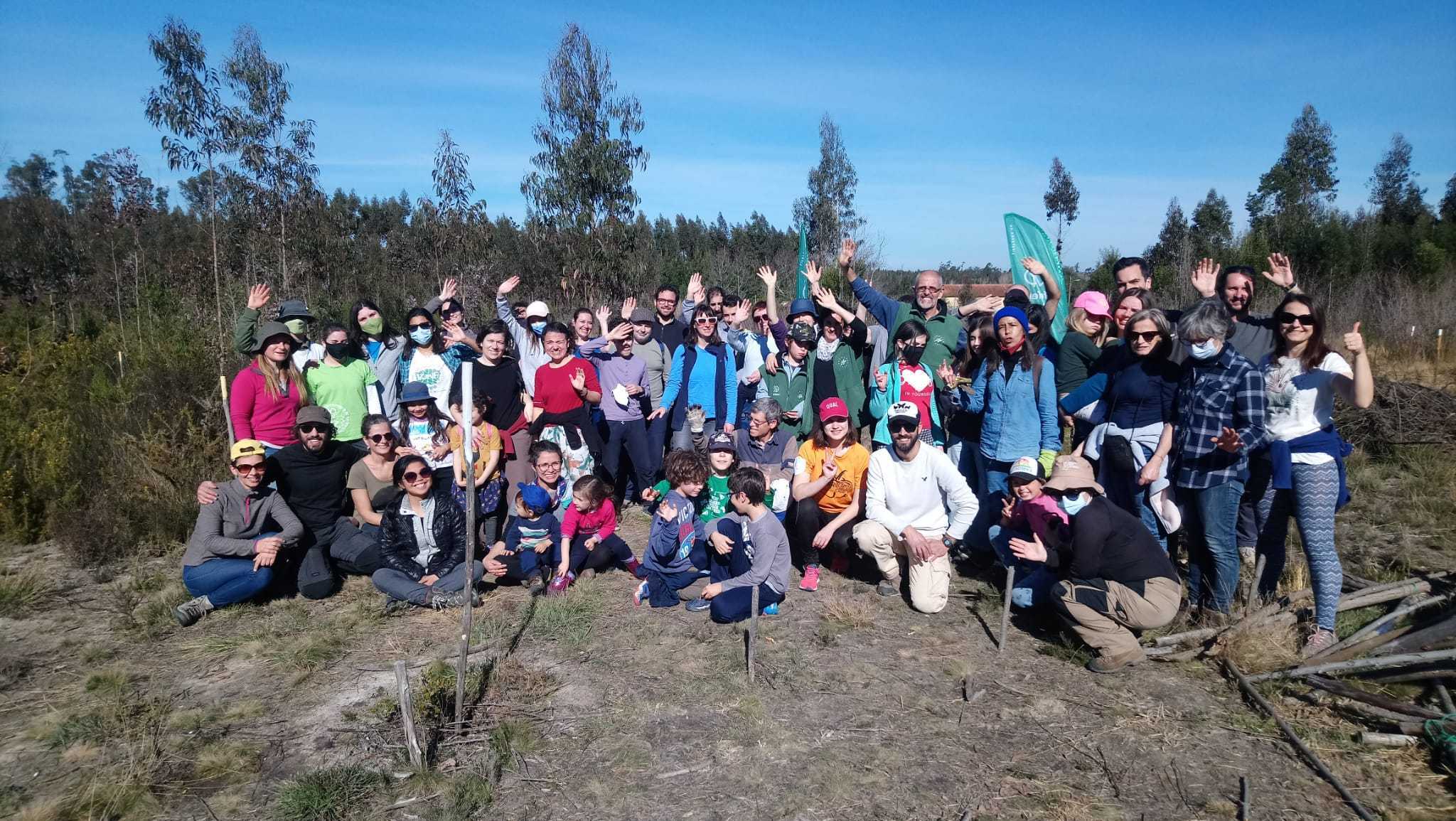Ecological restoration at the Ramalheira Woods, Portugal
Last Sunday, February 6th, Bosque da Ramalheira (Ramalheira woods) and ANYH Portugal, in collaboration with Life Terra, planted 200 trees. More than 30 participants could enjoy a day in nature and contribute to the restoration of this area near Aveiro.
The objective of this planting event is to restore the ecological balance of the land, thus the tree species selection has been made taking into account the ecosystem as a whole; bird habitats, pollination, etc.
What is the Ramalheira Woods project?
The Ramalheira Wood, or Bosque da Ramalheira in Portuguese, is a restoration project that aims to recover the ecological potential of this particular region, located at the south of Nariz, Aveiro.
These 1.5 hectares of wood, which historically used for wine and eucalyptus production, were heavily burnt in 2017. Since then, the land has been conquered by different invasive species, mainly acacia, due to its abandonment and lack of maintenance.
This is why Ines Domingues, Biologist and Researcher at the University of Aveiro, started a volunteering campaign to start restoring the area by controlling invasive species, encouraging the growth of species that regenerate naturally in this region (strawberry tree, oak, black willow), and by planting new tree and shrub species.
But the Ramalheira Wood project does not stop here. The idea is to also turn the woods into an open space for people to promote and enjoy nature and carry out other environmental education activities. Ines believes environmental education is best achieved if children connect directly with nature.
Characteristics of the Ramalheira woods
In terms of vegetation, the Ramalheira woods is a mix of Atlantic and Mediterranean climates, where deciduous forests of oaks naturally predominate, as well as bushes composed of heather and gorse.
Specifically, we can find Lusitanian oak (Quercus lusitanica), Cork oak (Quercus suber), English oak (Quercus robur), Strawberry tree (Arbutus unedo), Maritime pine (Pinus pinaster), and some marshy areas with an abundant presence of willows, mainly Grey willow (Salix atrocinerea). Also, we find some more specific species, such as the Common hawthorn (Crataegus monogyna) and areas of Eucalyptus (Eucalyptus globulus) due to past plantations.
In terms of fauna, several species of amphibians have already been observed, such as the yellow-spotted salamander and the pointy-snouted frog. Also, reptiles such as the lizard and the Lyran. In terms of mammals, reports from neighbours indicate the existence of foxes and squirrels.
We are really proud to be part of this project and we hope to see results in the near future. Looking forward to other activities together!




